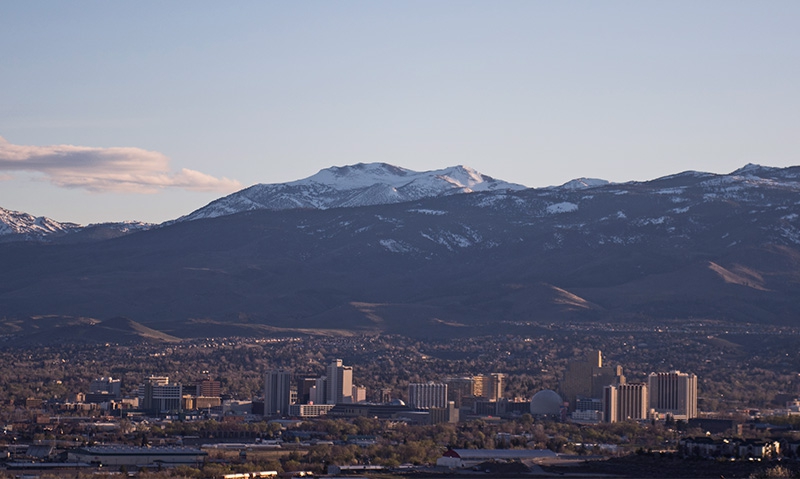
Altitude Adjustments
Although it sits on a flat valley floor surrounded by towering mountain ranges, Reno is actually 4,500 feet above sea level. Nearby destinations such as Virginia City or the rim of Lake Tahoe sit at over 6,000 feet. The thinner, arid atmosphere at these elevations contains less oxygen, filters fewer UV rays and dehydrates faster, which means visitors to the area need to be aware of how these conditions may effect them and take a few simple precautions.
Hydrate
Drink eight, 8-ounce glasses of water each day. Low air pressure and low humidity will dehydrate your body quicker than at lower altitudes, so water is key to fending off the effects of 4,500 feet. If you plan on spending extended time outdoors or participating in increased activity, be sure to hydrate well before you start. Also, avoid alcoholic beverages for 24 to 48 hours after you arrive, and consume in moderation for the remainder of your visit.
Take your time
The air is thin and contains less oxygen, therefore some people might begin to feel some of the effects such as headache, nausea, insomnia or fatigue. If you experience any of the symptoms, rest, reduce your activity and give yourself time to adapt to the mountain conditions. If symptoms persist or worsen, call for medical assistance.
Use sun protection
Reno gets more than 300 days of sunshine annually. While humidity is limited in the high desert, guests are encouraged to use suntan lotion during the hot August days when temperatures will be around 90 but can hit 100. The thin atmosphere filters out less of the UV radiation at higher elevations, so sunburn can happen quickly and can be severe. At the 6,500-foot elevation at the rim of Lake Tahoe, there is 25 percent more UV radiation than at sea level. Slather on the sunscreen, 30 to 50 SPF, and reapply it often throughout the day. Avoid the peak hours of sun when possible and cover up with hats or light clothing when you must be outdoors. Don’t forget your eyes! The reflection from snow or water can increase the already intense UV assault, and you can actually burn the surface of your eyes if over-exposed. Wear sunglasses with 100 percent UV protection.
Dress in layers and be aware of weather conditions
While Reno seems like a desert, be aware that the range of daily temperatures can be extreme. Summertime highs can reach over 100 degrees and evening lows can fall to 30 degrees. Sudden weather changes are common and heavy winds, strong storms and mudslides can alter your surroundings in an instant. Paying close attention and being prepared can keep you from being caught in the elements unprotected.
Those who have a history of heart, circulatory or lung disease, those over 35 who plan on strenuous outdoor activity, pregnant women and those recovering from respiratory infections or pneumonia should be extra cautious while in Reno, but for most visitors, remembering these precautions will keep you feeling great during your stay in the area.
